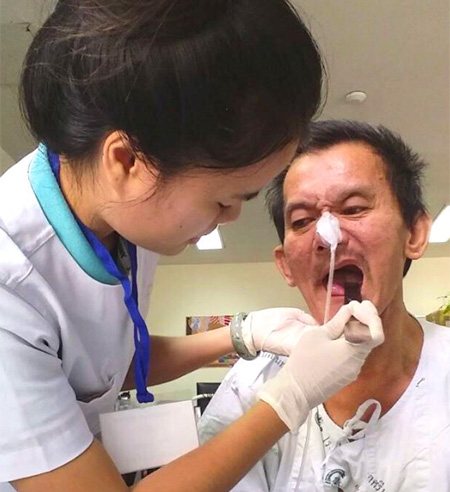It refers to a difficulty in swallowing: it takes more time and effort to move food and/or liquid from your mouth to your stomach. It may also be associated with pain. In some severe cases, swallowing may be impossible.
Dysphagia can occur at any age, but it’s more common in older adults. The causes of swallowing problems vary but the main causes are post-stroke, brain tumor, GERD, larynx cancers.
Signs and symptoms associated with dysphagia may include:
- Having pain while swallowing
- Having the sensation of food getting stuck in the throat or chest
- Drooling
- Being hoarse
- Bringing food back up
- Having frequent heartburn
- Having a nasal reflux
- Unexpectedly losing weight
- Coughing or gagging when swallowing
- Having to cut food into smaller pieces or avoiding certain foods because of trouble swallowing

Treatment relays on the cause of the dysphagia but the main goal is to help the patient swallow safely by providing structured exercises and specific swallowing maneuvers.
Speech therapists work as well with dietitians in order to adjust the food consistencies depending on each patient need. In some cases, a gastrostomy is put in order to protect the airway from food penetration.
Speech therapists try to remove PEG / if possible and train the patient to re-eat from his nose.
